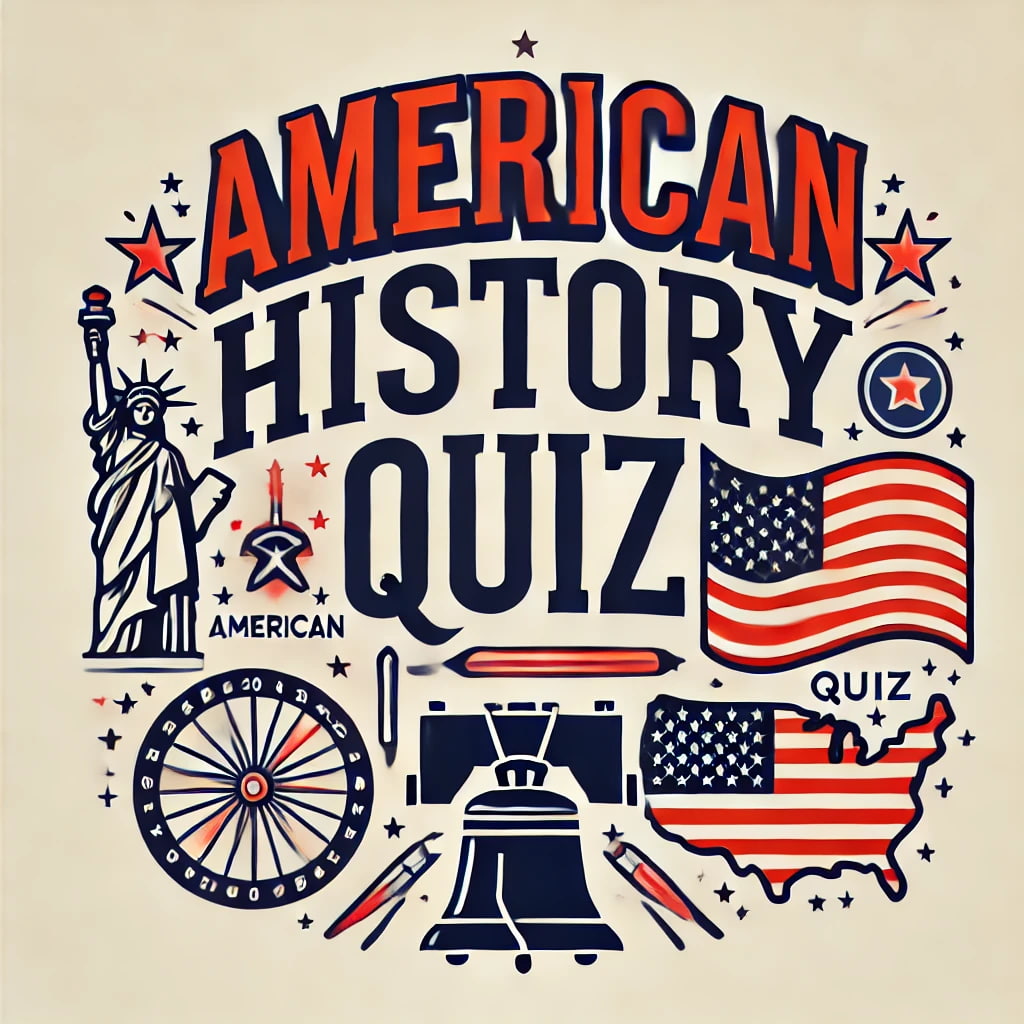Q1: Who was the primary author of the Declaration of Independence?
A1: Thomas Jefferson
Q2: Select all of the following that were original thirteen colonies.
A2: Virginia, Massachusetts, New York
Q3: Arrange these U.S. Presidents in the order they served, from earliest to latest.
A3: George Washington, Abraham Lincoln, Franklin D. Roosevelt
Q4: Which event sparked the beginning of the American Civil War?
A4: Attack on Fort Sumter
Q5: Select all of the following amendments that are part of the Bill of Rights.
A5: First Amendment, Fifth Amendment, Eighth Amendment
Q6: Which territory was purchased from France in 1803, doubling the size of the United States?
A6: Louisiana Territory
Q7: Select all of the following events that occurred during the Cold War.
A7: Cuban Missile Crisis, Korean War, Vietnam War
Q8: Match each amendment to its description.
A8: First Amendment - Freedom of speech, religion, press; Second Amendment - Right to bear arms; Fourth Amendment - Protection against unreasonable searches and seizures
Q9: What was the main purpose of the Monroe Doctrine?
A9: To prevent European colonisation in the Americas
Q10: Who was President of the United States during the Great Depression and World War II?
A10: Franklin D. Roosevelt
Q11: Arrange these wars involving the United States in chronological order.
A11: Revolutionary War, American Civil War, World War I
Q12: Select all of the following who were leaders in the Civil Rights Movement.
A12: Martin Luther King Jr., Rosa Parks, Malcolm X
Q13: What was the primary purpose of the Lewis and Clark expedition?
A13: To explore and map the newly acquired Louisiana Territory
Q14: Select all of the following that were New Deal programs.
A14: Social Security Act, Civilian Conservation Corps, Tennessee Valley Authority
Q15: Match each U.S. state to its historical acquisition.
A15: Alaska - Purchased from Russia; Florida - Acquired from Spain; Hawaii - Annexed as a territory
Q16: What was the main cause of the economic prosperity of the 1920s in the United States?
A16: Rapid industrialisation and consumerism
Q17: Which Supreme Court case declared that "separate but equal" facilities were constitutional?
A17: Plessy v. Ferguson
Q18: Select all of the following that were causes of the American Revolutionary War.
A18: Taxation without representation, The Intolerable Acts, Boston Tea Party
Q19: Which of the following is known as the "Great Emancipator"?
A19: Abraham Lincoln
Q20: Which country did the United States fight in the War of 1812?
A20: United Kingdom
Q21: Select all of the following territories that were acquired by the United States through the Treaty of Guadalupe Hidalgo.
A21: California, New Mexico, Arizona
Q22: Arrange these historical documents in the order they were ratified.
A22: Declaration of Independence, Articles of Confederation, United States Constitution
Q23: Match each civil rights leader to their notable action.
A23: Rosa Parks - Refused to give up bus seat; Martin Luther King Jr. - Delivered "I Have a Dream" speech; Thurgood Marshall - First African American Supreme Court Justice
Q24: What was the main objective of the Manhattan Project?
A24: To develop the atomic bomb
Q25: Select all of the following that were effects of the Prohibition era.
A25: Rise of organised crime, Increase in speakeasies, Growth of the temperance movement
Q26: Who wrote the influential pamphlet "Common Sense" advocating American independence?
A26: Thomas Paine
Q27: Select all of the following that were causes of the Great Migration.
A27: Racial segregation laws in the South, Economic opportunities in Northern cities, Boll weevil infestation destroying crops
Q28: Match each U.S. President to their associated event.
A28: Woodrow Wilson - Led the U.S. during World War I; Theodore Roosevelt - Progressive Era reforms; Richard Nixon - Involved in the Watergate scandal
Q29: What was the main purpose of the Marshall Plan?
A29: To aid European economic recovery after WWII
Q30: Who was the main leader of the Underground Railroad?
A30: Harriet Tubman

